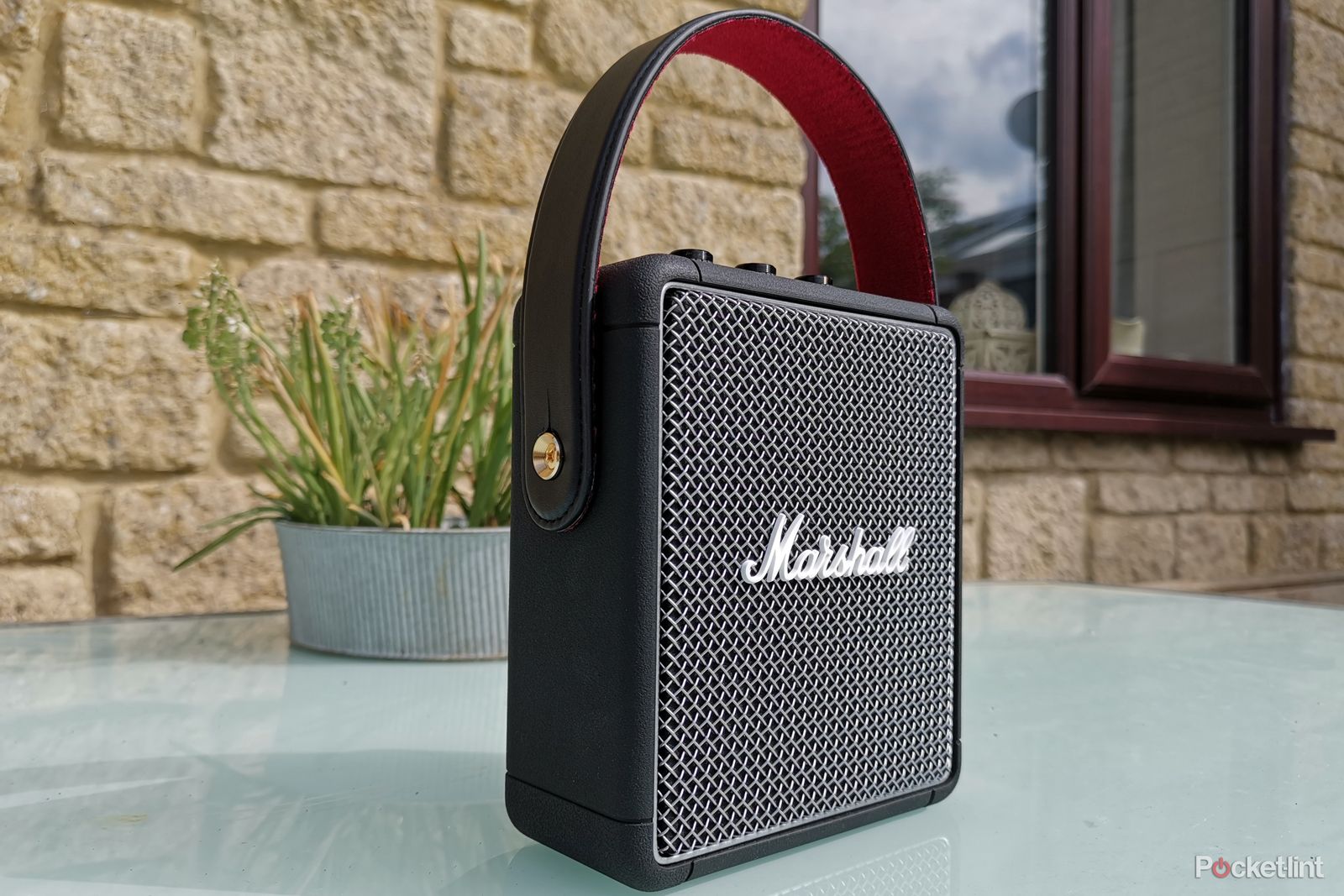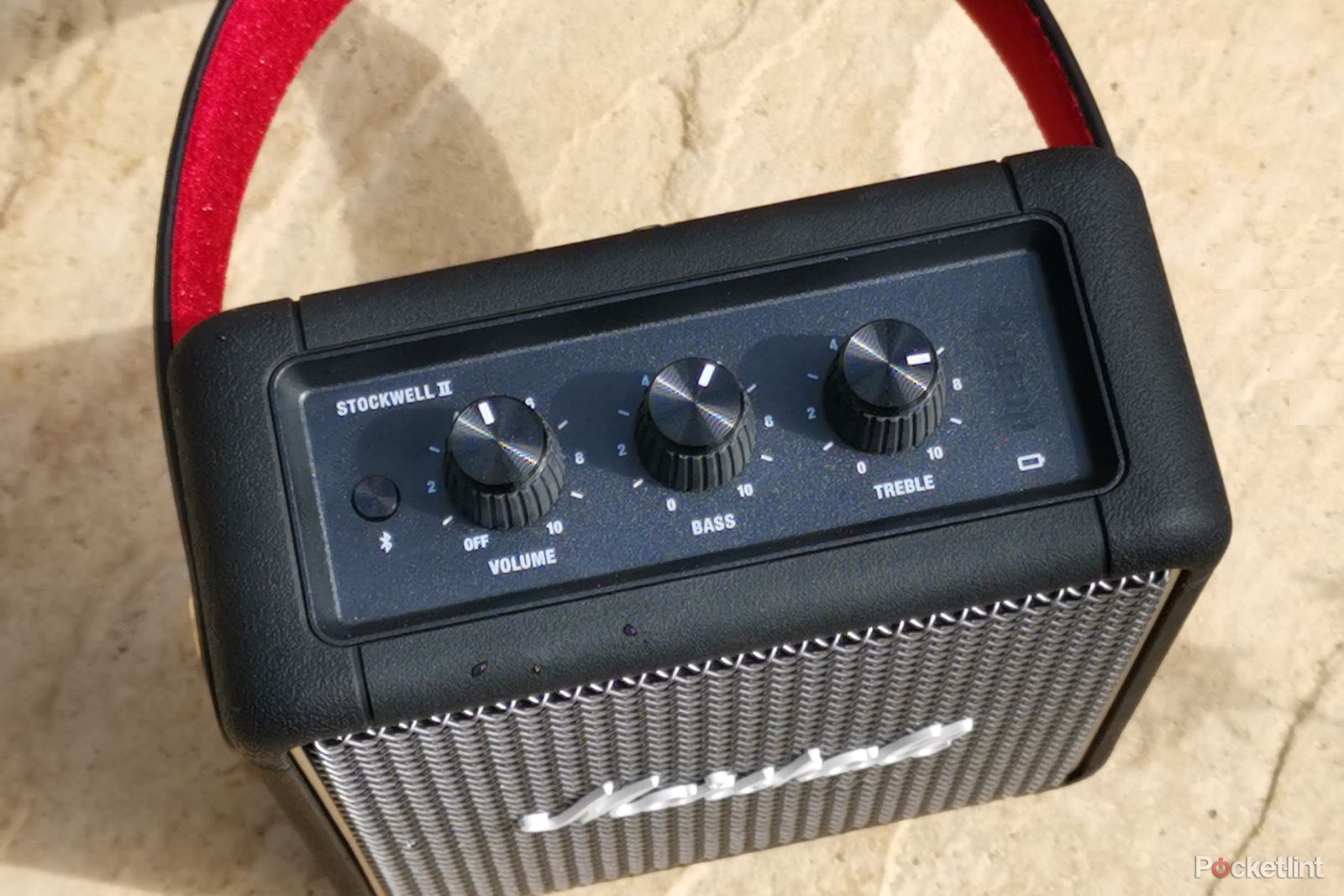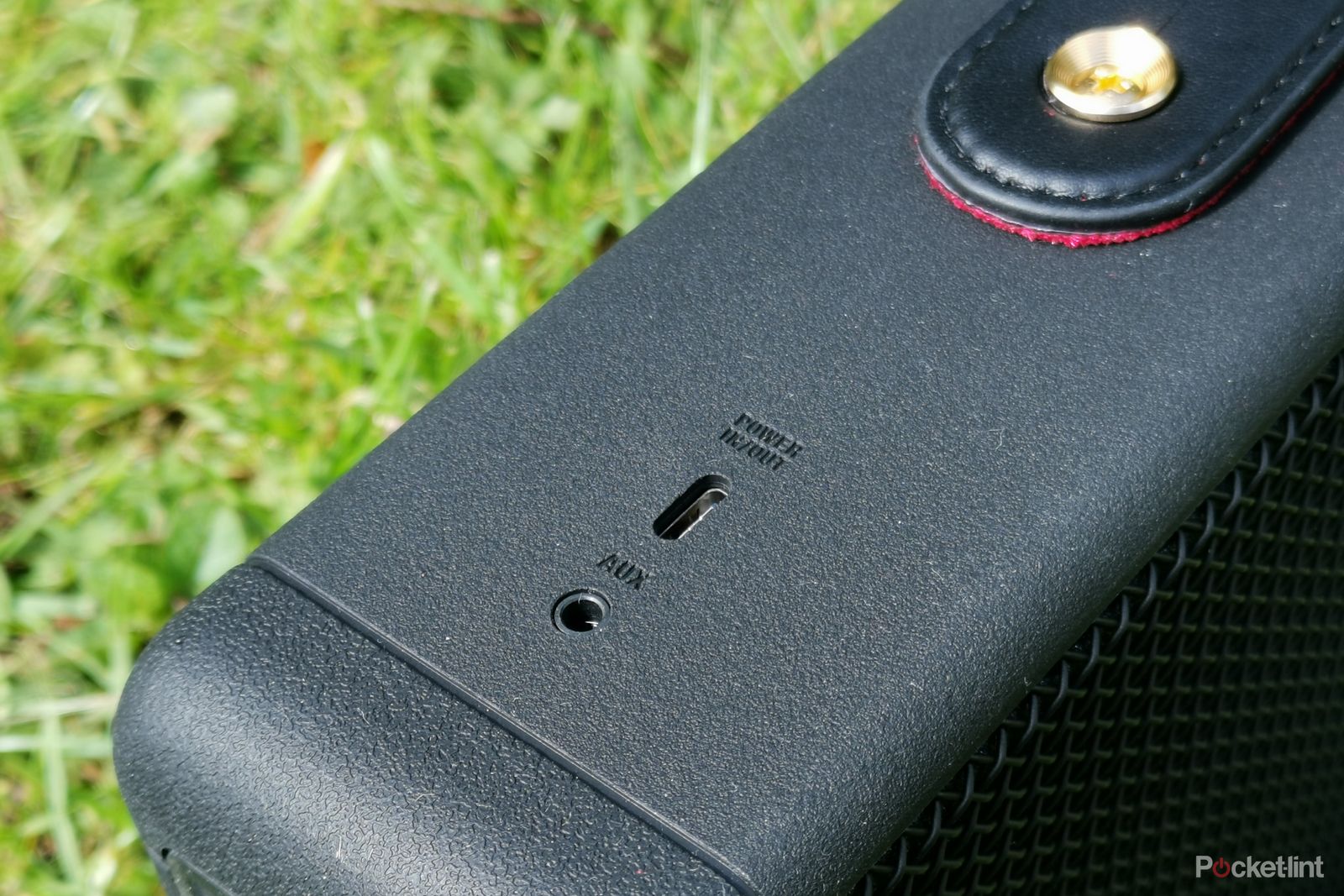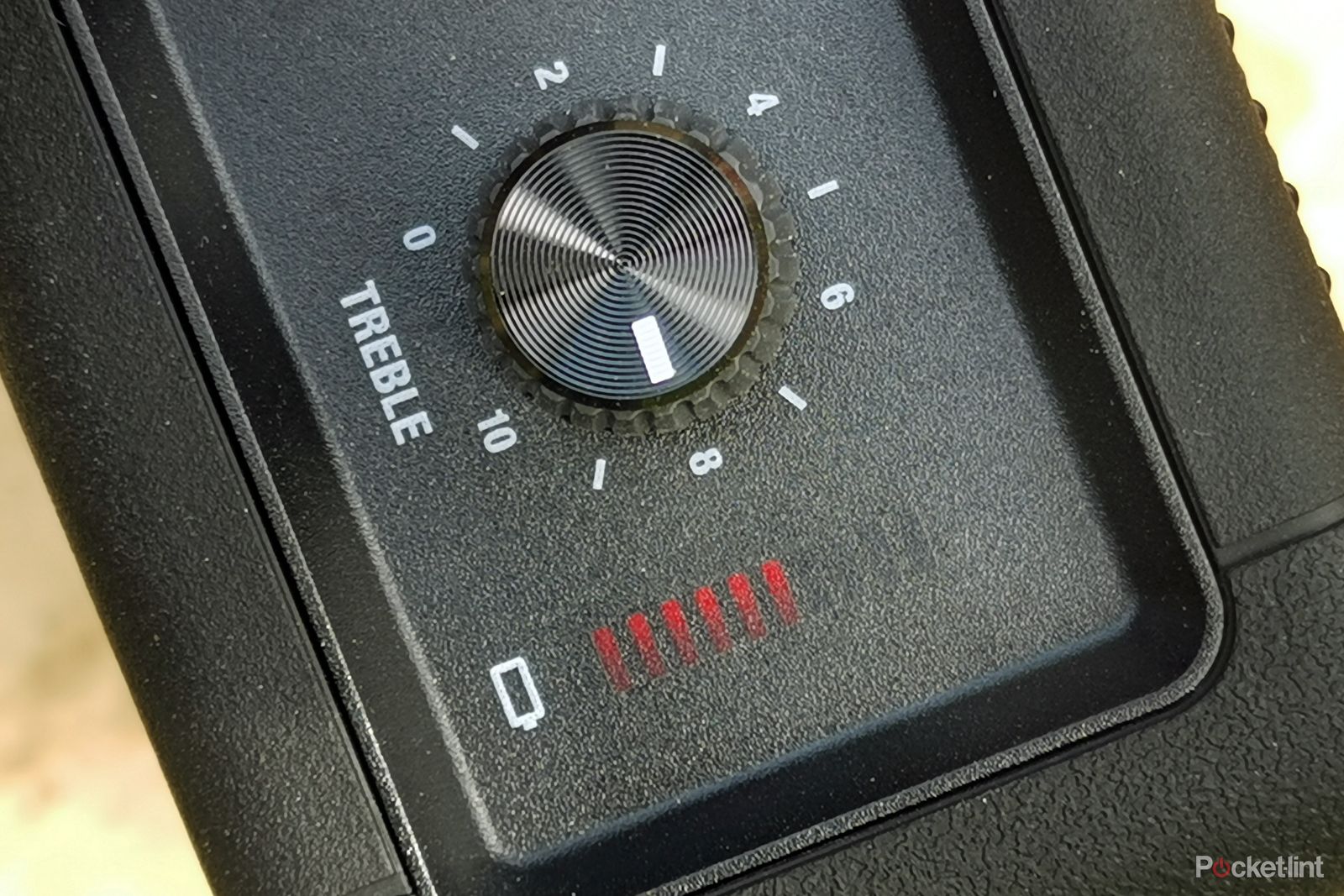Best-known for its amplification, Marshall has now made quite a name for itself in portable and small-format audio. So much so that it now has a range of 14 speakers, some portable, some with Amazon Alexa, some with Google Assistant voice control.
Following on from the portable £269 Kilburn II, Marshall has now released a larger version, the £350 Tufton, as well as the speaker we're reviewing here: the Stockwell II. A predecessor, the Stockwell, is also on sale around the £99 mark.
There's no doubting that the Stockwell II does have a premium price point that puts it above other rivals such as the Ultimate Ears Megaboom 3 and B&O BeoPlay A1. So it has a lot to live up to in that regard.
Our quick take
Marshall's supremely portable Bluetooth speaker will provide you with powerful, adjustable audio - there's also terrific battery life.
This isn't a party speaker though, it's a device designed for a smaller space or audience and it has been optimised for portability. So think use cases like listening in small rooms, a bedroom, at a picnic or at the beach. As such, it's probably a second device.
If you're looking for something as a jack of all trades you might be better off looking at the Kilburn II for only slightly more cash. And, if you're only looking at something for occasional use, then do you want to spend quite this much?
It's hard to deny that the Stockwell II has super sound, but you'll need to often take a Bluetooth speaker outside to justify the outlay. Mind you, summer is here, right?
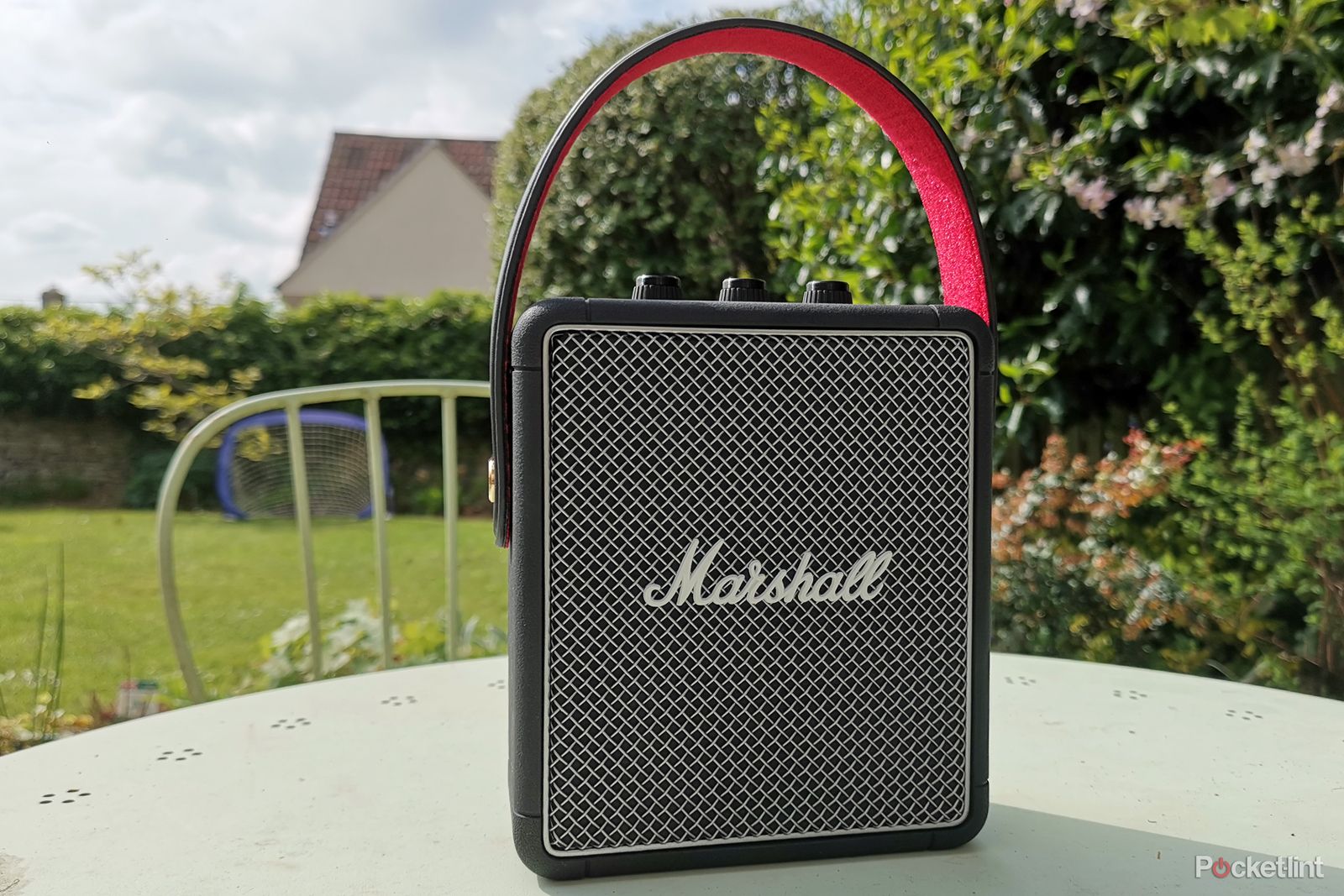
Marshall Stockwell II - 4.0 / 5
| FOR | AGAINST |
|---|---|
|
|
Marshall Stockwell II
Design
- Leather carry handle
- Hardy silicone shell
- IPX4 water resistance
- Measures: 180 x 160 x 70mm
- Weighs: 1.4kg
The Stockwell II has several enhancements over its forerunner, including a more consistent style with the rest of the family of devices. As you can see from our pictures, the speaker has an upright design - unlike the Kilburn II, which is a flatter rectangle. The more expensive Tufton also shares the same familial design. Each of the three devices has a leather carry handle which comes separately in the box - you just attach it by pressing it onto the lugs.
While the Stockwell II's grilles are metal, the main body of the speaker uses a solid silicone material that's clearly inspired by Marshall's classic amplification and designed for durability. We tried to mark it by scratching the surface and it's extremely hard to make any kind of impression on it without attacking it with an implement.
The speaker is also IPX4 water-resistant so it'll resist the odd rain shower when you're out and about. It coped with rain in our garden and should cope with splashing water from all directions (an improvement on the Tufton and Kilburn II's IPX2 for vertical drip protection only). Put it this way: it'll withstand your rainy camping trips.
The speaker is available in both black and grey, although for our money the black looks a lot smarter than the grey. We also rather like the red inlay to the black strap on our review model.
Features
- Bluetooth 5.0 only
- Volume, bass and treble knobs
- Battery indicator
- Aux in, USB-C for charging other devices
Like other Marshall devices, there are three main knobs on top controlling volume, bass and treble. As always, these physical controls are very welcome.
There's also a battery level indicator. On the side, there's a 3.5mm auxiliary input jack for direct connection to a phone or iPod plus a forward-thinking USB-C charging port - a USB-A to USB-C cable is included in the box, meaning you could charge an Android phone while on the go (or an iPhone if you buy a USB-C to Lightning cable).
The Stockwell II has Bluetooth 5.0 (not aptX, however) and like many other new Bluetooth devices, enables you to connect more than one device to it simultaneously.
Pairing is via a small Bluetooth button on top of the unit. There's no Wi-Fi or other connectivity. This is a disadvantage in a speaker that's designed to stay on the sideboard at home, but it's difficult to criticise in a device like this that's clearly been designed to go where you go.
Battery life is cited at around 20 hours, but we think that is conservative. On our first listening session, we've listened to it for around 16 hours for the battery life to reach half empty. We managed to get around 25 hours from it in total at on an average of two-thirds volume. Obviously, if you're listening at full volume all the time you should expect less than this.
There's also a quick-charge feature, so 20 minutes at the plug can give you around six hours of playback. If you're charging the device from empty though, it does take a little while to juice up completely - some four to five hours. Coincidentally, the battery isn't replaceable.
Sound quality
- One 10W class D amp for the woofer
- Two 5W Class D amps for each tweeter
There is more heft to the device than many of its competitors, but that's not surprising when you hear the sound output. There are some excellent audio specs here for the size - two class D amplifiers with 5W for each tweeter, alongside a 10W class D woofer. It is loud and has clearly been designed to be adept with rock and dance tracks.
Sound emerges from both the front and back and Marshall has utilised Blumlein Stereo Sound as it did in the Kilburn II, launched at IFA 2018. These speakers build on British engineer Alan Blumlein's original idea of stereophonic sound by separating it out and projecting it in all directions. It is also possible to have a poorer experience of the sound if you purposely sit side on to the speaker, but you have to really try to notice it.
Maxing out the bass and volume gives a remarkably low level of distortion for a speaker of this size, even if it's not the cleanest sound. The main body is only 160mm tall, after all. It's fair to say that some compromise has been made because of the physical size of the unit but don't expect any weakness in terms of size of the sound - others we demonstrated the speaker to were expecting a much bigger unit for the size of the sound.
We found we were happy to have the bass set on seven or eight out of 10, although listening to the new Chemical Brothers album demanded us to set the bass higher. And when we did it didn't disappoint.
We feel the range of the volume control needs a little more refinement though - the volume is still quiet at five out of 10, so the first half of the volume range is underused. If you don't want it too loud or too quiet, fine-tuning the level can be tricky. And, as the volume control also turns the unit on, you can't keep it at the same volume when you turn it on and off. It's a small quibble, but then this is an expensive speaker.
Marshall Stockwell II
To recap
Marshall's supremely portable Bluetooth speaker will provide you with powerful, adjustable audio - but there are some cheaper rivals around worth considering too.

